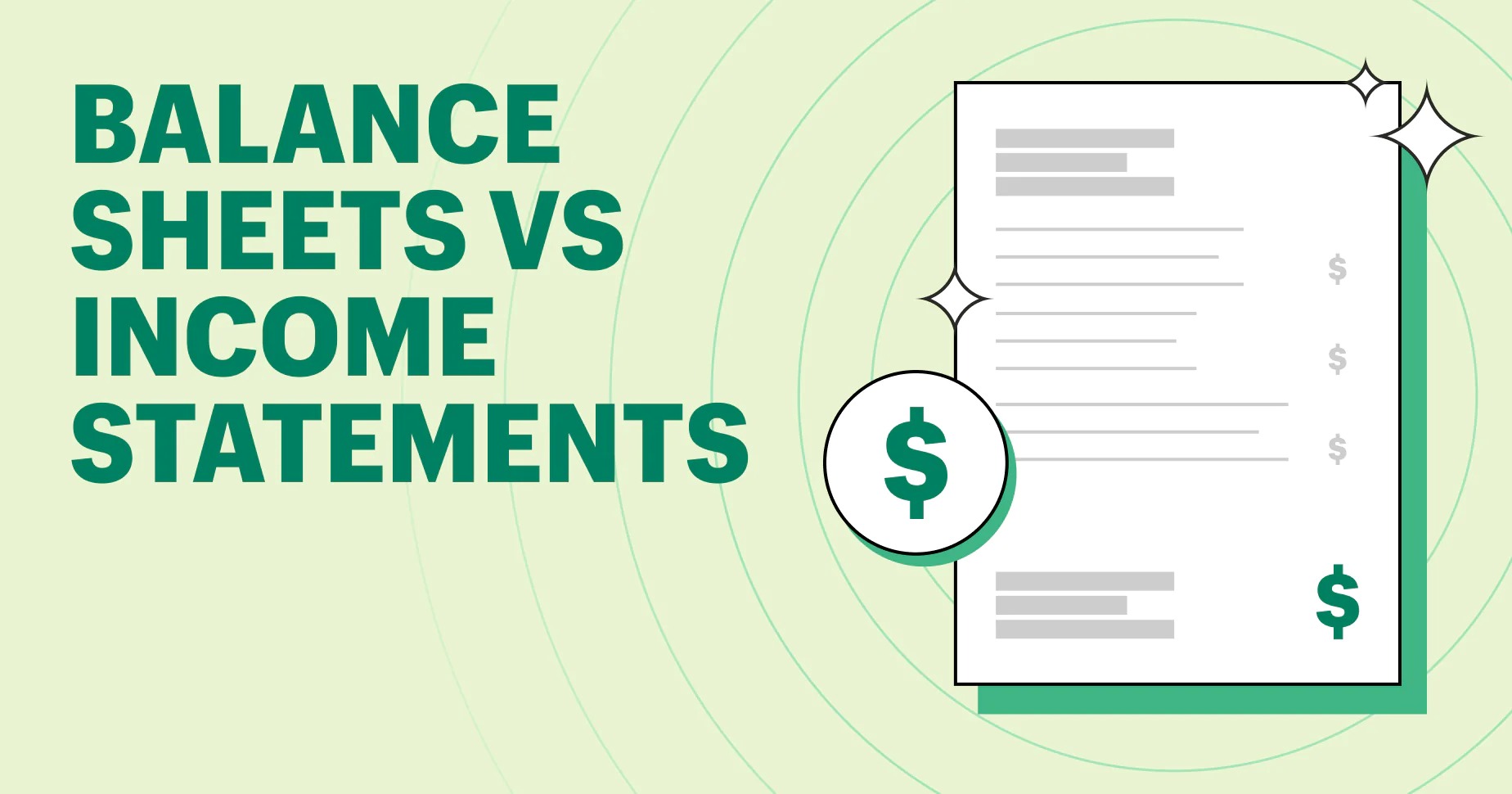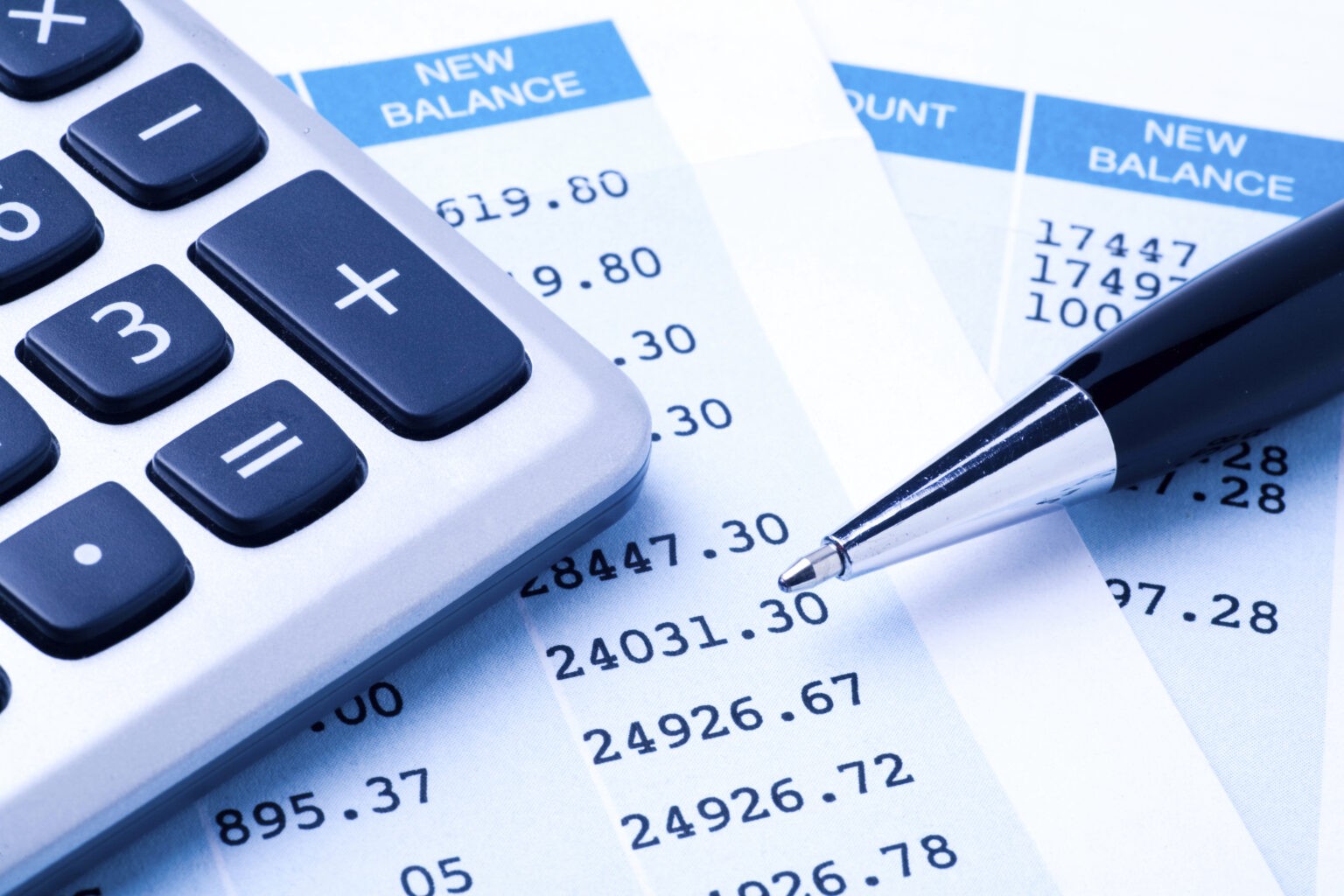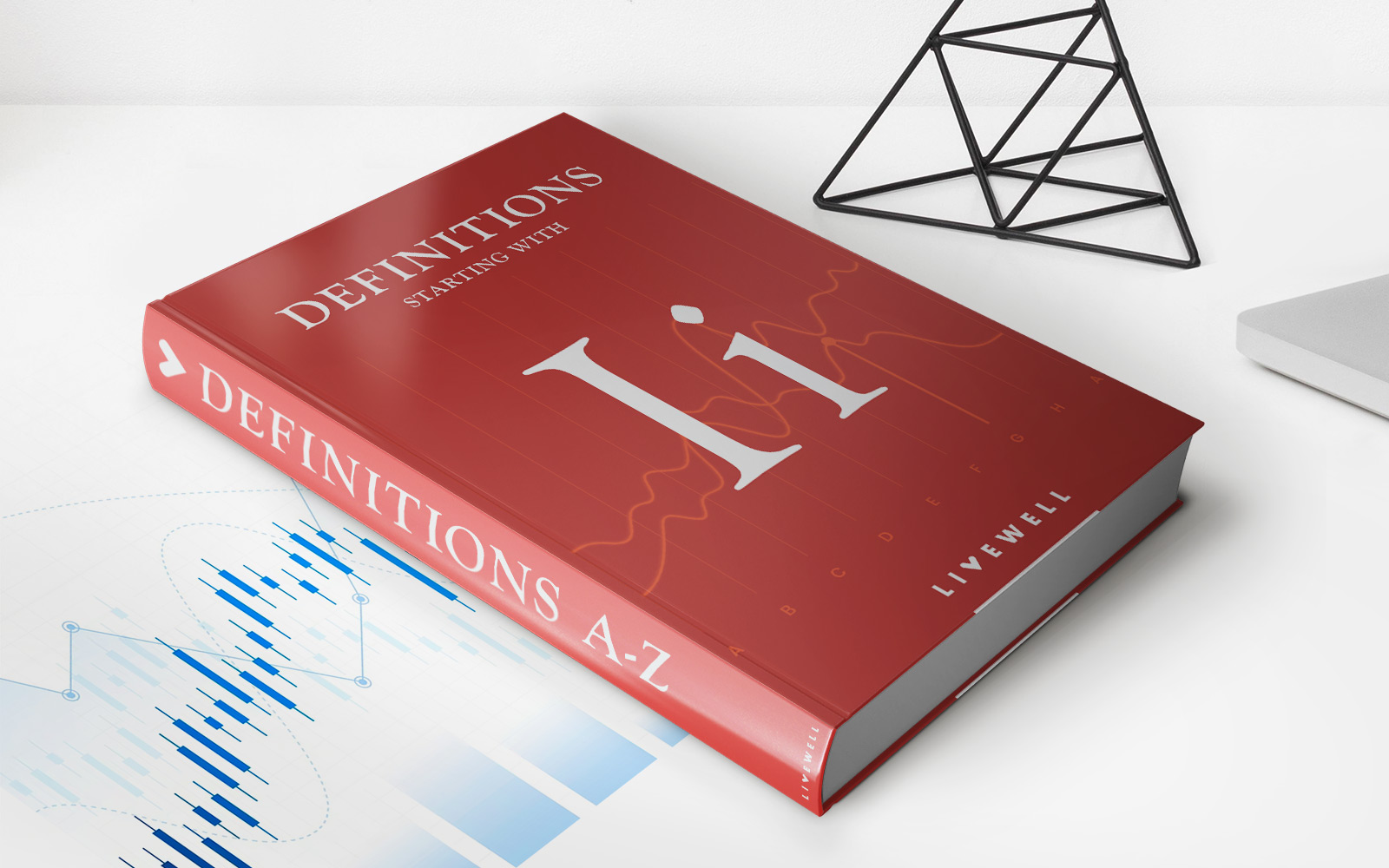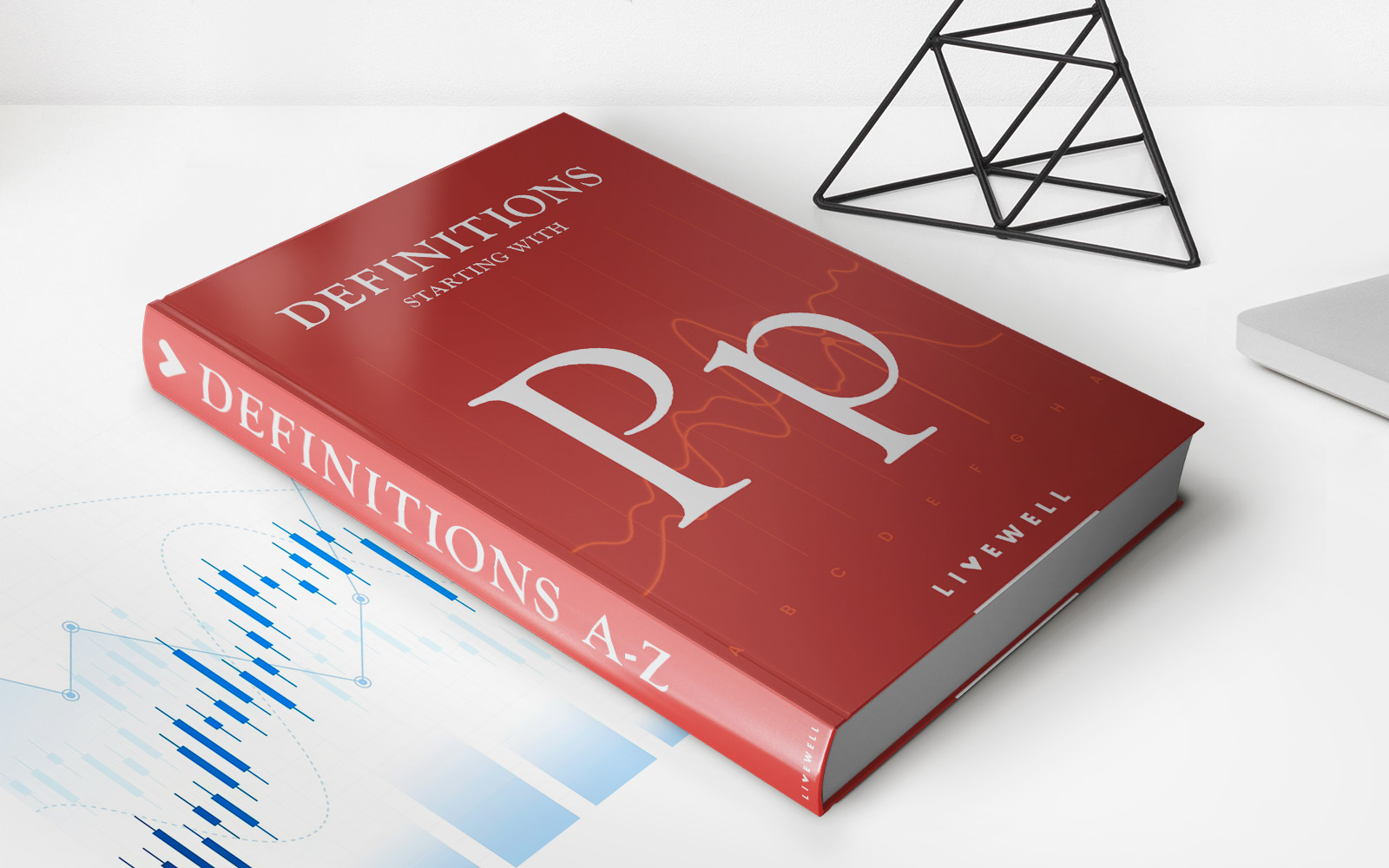Home>Finance>How Income Statement And Balance Sheet Are Related


Finance
How Income Statement And Balance Sheet Are Related
Modified: March 1, 2024
Discover how the income statement and balance sheet are interrelated in the world of finance. Gain insights into financial statements and their impact on the overall financial health of an organization.
(Many of the links in this article redirect to a specific reviewed product. Your purchase of these products through affiliate links helps to generate commission for LiveWell, at no extra cost. Learn more)
Table of Contents
- Introduction
- Overview of Income Statement and Balance Sheet
- Components of Income Statement
- Components of Balance Sheet
- Relationship between Income Statement and Balance Sheet
- Importance of Analyzing Both Statements Together
- Case Study: Analyzing the Relationship between Income Statement and Balance Sheet
- Conclusion
Introduction
Welcome to this comprehensive article where we will explore the relationship between the Income Statement and Balance Sheet in finance. Understanding how these two financial statements are related is essential for individuals and businesses alike, as it provides valuable insights into their financial performance and overall health.
The Income Statement and Balance Sheet are two crucial financial documents that provide a snapshot of a company’s financial position at a given point in time. While they serve different purposes, they are deeply interconnected and together offer a holistic view of an organization’s financial standing.
In this article, we will delve into the components of both the Income Statement and Balance Sheet, examine their relationship, and highlight the importance of analyzing them together for a comprehensive understanding of financial performance.
Whether you are an investor evaluating potential investments, a business owner seeking to assess profitability, or a student studying finance, this article will equip you with the knowledge and understanding necessary to interpret and analyze these critical financial statements effectively.
Overview of Income Statement and Balance Sheet
Before we delve into the relationship between the Income Statement and Balance Sheet, let’s first understand what each of these financial statements represents.
The Income Statement, sometimes referred to as the Profit and Loss Statement, provides a summary of a company’s revenues, expenses, gains, and losses over a specific period. It reveals the profitability of the business by showing whether it generated a net profit or incurred a net loss during the given timeframe. This statement allows stakeholders to assess the company’s ability to generate profit and evaluate its operational performance.
On the other hand, the Balance Sheet gives a snapshot of an organization’s financial position at a particular moment in time. It lists the company’s assets, liabilities, and shareholders’ equity. The Balance Sheet provides insights into the company’s financial health by showing what the company owns (its assets), what it owes (its liabilities), and what remains for the owners (shareholders’ equity).
While the Income Statement focuses on the company’s revenues and expenses, the Balance Sheet provides a broader picture of the company’s financial situation, including its liquidity, solvency, and overall financial stability.
Both the Income Statement and Balance Sheet are prepared using the double-entry accounting system, which ensures that every transaction is recorded at least twice – once as a debit and once as a credit. This system guarantees that the total debits equal the total credits, ensuring accuracy and adherence to the fundamental principles of accounting.
Now that we have a basic understanding of the two financial statements, let’s take a closer look at the components of each to gain a deeper understanding of how they are prepared and what information they reveal.
Components of Income Statement
The Income Statement is composed of several key components that provide a comprehensive overview of a company’s financial performance over a specific period. Let’s explore these components:
- Revenue: Revenue represents the total amount of money earned by a company through its primary business activities, such as sales of goods or services. It is the starting point of the Income Statement and is crucial for determining the company’s top-line growth.
- Cost of Goods Sold (COGS): COGS includes the direct costs associated with producing or delivering the goods or services sold by the company. It encompasses materials, labor, and other expenses directly related to the production process. COGS is subtracted from the revenue to calculate the Gross Profit.
- Gross Profit: Gross Profit is the difference between Revenue and COGS. It indicates the profitability of a company’s core operations before considering other expenses, such as operating expenses.
- Operating Expenses: Operating Expenses include all the costs incurred by a company in its day-to-day business operations. These expenses can include salaries, rent, utilities, marketing expenses, and administrative costs. Operating Expenses are subtracted from the Gross Profit to calculate the Operating Income.
- Operating Income: Also known as Operating Profit or Earnings Before Interest and Taxes (EBIT), Operating Income represents the profit generated from the company’s core operations, excluding non-operating items such as interest and taxes.
- Non-operating Income and Expenses: Non-operating Income and Expenses include items that are not directly related to the company’s core operations, such as interest income, interest expense, gains or losses from investments, or foreign exchange fluctuations.
- Net Income: Net Income is the final component of the Income Statement and represents the company’s overall profit after accounting for all revenues, expenses, gains, and losses. It is the bottom-line figure that reflects the company’s profitability.
By analyzing the various components of the Income Statement, stakeholders can gain insights into a company’s revenue generation, cost structure, gross margin, operating efficiency, and overall profitability.
Components of Balance Sheet
The Balance Sheet is an important financial statement that provides a snapshot of a company’s financial position at a specific point in time. It consists of several key components that reveal the company’s assets, liabilities, and shareholders’ equity. Let’s explore these components:
- Assets: Assets represent everything that a company owns or controls that has economic value. They can be categorized into current assets and non-current assets. Current assets include cash, accounts receivable, inventory, and short-term investments. Non-current assets include property, plant, and equipment, long-term investments, and intangible assets like patents and trademarks. Assets reflect the company’s resources and its ability to generate future economic benefits.
- Liabilities: Liabilities are the company’s obligations or debts. They can be current liabilities or long-term liabilities. Current liabilities include accounts payable, short-term loans, and accrued expenses. Long-term liabilities include long-term debt and deferred tax liabilities. Liabilities represent the company’s financial obligations to external parties.
- Shareholders’ Equity: Shareholders’ Equity, also known as owners’ equity or net worth, represents the residual interest in the company’s assets after deducting liabilities. It includes the initial investments made by shareholders, retained earnings, and additional capital raised through stock issuances. Shareholders’ equity reflects the company’s net worth and indicates the shareholders’ ownership stake in the company.
The Balance Sheet follows the fundamental accounting equation: Assets = Liabilities + Shareholders’ Equity. This equation ensures that the company’s resources (assets) are financed by either external sources (liabilities) or internal sources (shareholders’ equity).
By analyzing the various components of the Balance Sheet, stakeholders can assess a company’s liquidity, solvency, and financial health. They can evaluate the company’s ability to meet its short-term obligations, its long-term debt obligations, and the shareholders’ investment in the company.
It is important to note that the Balance Sheet is a static representation of a company’s financial position at a specific point in time. To fully understand the company’s financial performance, it is essential to analyze the Balance Sheet in conjunction with the Income Statement.
Relationship between Income Statement and Balance Sheet
The Income Statement and Balance Sheet are closely intertwined, and the information presented in one statement directly impacts the other. The relationship between these two financial statements can be understood through the concept of accrual accounting.
Accrual accounting recognizes revenues when they are earned, regardless of when the payment is received, and records expenses when they are incurred, regardless of when the payment is made. This accounting method ensures that the financial statements reflect the economic reality of the business.
The Income Statement reflects the revenues earned and expenses incurred during a specific period, providing a measure of the company’s profitability. The net income from the Income Statement is then transferred to the Balance Sheet, where it contributes to the company’s retained earnings, which is part of shareholders’ equity.
Additionally, certain items from the Income Statement directly impact the Balance Sheet. For example:
- Net Income: Net income from the Income Statement increases the retained earnings in the Balance Sheet, reflecting the profits that have been reinvested back into the company.
- Dividends: Dividends declared by the company reduce the retained earnings and cash balances, affecting both the Income Statement and Balance Sheet.
- Depreciation and Amortization: Depreciation and amortization expenses recorded on the Income Statement reduce the value of the company’s assets on the Balance Sheet.
- Income Taxes: The income tax expense recorded on the Income Statement reduces the company’s net income and retained earnings, affecting the Balance Sheet.
It is important to analyze both the Income Statement and Balance Sheet together to gain a comprehensive understanding of a company’s financial performance. While the Income Statement focuses on revenue generation and profitability, the Balance Sheet provides information about the company’s assets, liabilities, and shareholders’ equity.
By examining both financial statements side by side, investors, creditors, and other stakeholders can evaluate the company’s overall financial health, assess its liquidity and solvency, and make informed decisions regarding investment, lending, or other business transactions.
Importance of Analyzing Both Statements Together
Analyzing both the Income Statement and Balance Sheet together is crucial for gaining a comprehensive understanding of a company’s financial performance and overall financial health. While each statement provides valuable insights on its own, it is the combination of the two that offers a more complete picture.
Here are key reasons why analyzing both statements together is essential:
- Identifying Financial Trends: By comparing data from the Income Statement and Balance Sheet over multiple periods, analysts can identify trends in revenue growth, expense management, asset utilization, and profitability. This information helps forecast future performance and make informed decisions.
- Evaluating Profitability and Efficiency: The Income Statement measures the company’s profitability by considering revenue generation, cost management, and overall efficiency. However, the Balance Sheet provides insights into the company’s ability to convert its assets into revenue, manage liabilities, and effectively utilize shareholders’ equity.
- Assessing Liquidity and Solvency: The Balance Sheet reveals the company’s liquidity position by showing the proportion of current assets to current liabilities. Combined with the Income Statement, it can provide a clearer view of the company’s ability to meet short-term financial obligations. Additionally, the Balance Sheet also reflects the company’s solvency by considering long-term debt, equity ratios, and capital structure.
- Supporting Decision-Making: Investors, creditors, and other stakeholders use both financial statements to make informed decisions. For example, investors may consider the company’s revenue growth, profitability, and risk exposure, along with its asset and liability structure. Creditors may assess the company’s ability to repay debts and evaluate the company’s financial stability.
- Identifying Financial Irregularities: Analyzing both statements together can help identify inconsistencies or irregularities in the financial data. Discrepancies between the Income Statement and the Balance Sheet may reveal errors in recording transactions, potential fraud, or financial mismanagement.
By analyzing both the Income Statement and Balance Sheet together, analysts can gain a holistic view of a company’s financial performance, liquidity, solvency, and overall financial health. This comprehensive understanding is essential for making informed decisions, conducting financial analysis, and assessing the company’s long-term viability.
Case Study: Analyzing the Relationship between Income Statement and Balance Sheet
To illustrate the significance of analyzing the relationship between the Income Statement and Balance Sheet, let’s explore a case study of a fictional company, ABC Corporation.
ABC Corporation is a manufacturing company that produces and sells electronic devices. We will examine the financial statements of ABC Corporation for the fiscal year 2021.
By analyzing the Income Statement and Balance Sheet together, we can gain insights into the company’s financial performance and evaluate its overall financial health.
Income Statement Analysis:
The Income Statement of ABC Corporation for the fiscal year 2021 reveals that the company generated a total revenue of $10 million. After deducting the Cost of Goods Sold (COGS) of $4 million and subtracting the operating expenses of $2 million, the company’s Operating Income is calculated to be $4 million. Considerable non-operating income of $1 million led to a Net Income of $5 million.
Balance Sheet Analysis:
Looking at the Balance Sheet, we can see that ABC Corporation has total assets worth $15 million, including current assets of $5 million and non-current assets of $10 million. The company’s liabilities consist of current liabilities of $3 million and long-term liabilities of $4 million. The remaining amount of $8 million represents shareholders’ equity.
Interpreting the Relationship:
By comparing the figures from the Income Statement and the Balance Sheet, we can make meaningful observations:
- The Net Income of $5 million from the Income Statement contributes to shareholder’s equity, increasing it to $8 million on the Balance Sheet.
- The revenue of $10 million from the Income Statement is reflected as an increase in the company’s assets on the Balance Sheet.
- The non-operating income of $1 million affects the company’s net income and, subsequently, the retained earnings on the Balance Sheet.
- The COGS and operating expenses recorded on the Income Statement reduce the company’s gross profit, operating income, and retained earnings on the Balance Sheet.
- The current and long-term liabilities on the Balance Sheet reflect the company’s obligations and impact its overall financial stability.
By analyzing both the Income Statement and Balance Sheet together, we can assess ABC Corporation’s profitability, liquidity, and solvency. We can also identify areas of strength or concern within the company’s financial position and make informed decisions regarding investment, lending, or future business strategies.
This case study highlights the importance of analyzing the relationship between the Income Statement and Balance Sheet to gain a comprehensive understanding of a company’s financial performance and make sound financial decisions.
Conclusion
The Income Statement and Balance Sheet are two fundamental financial statements that provide valuable insights into a company’s financial performance and overall financial health. While the Income Statement focuses on revenue generation, expenses, and profitability, the Balance Sheet reveals the company’s assets, liabilities, and shareholders’ equity.
Analyzing both statements together is crucial for obtaining a comprehensive understanding of a company’s financial position. By evaluating the relationship between the Income Statement and Balance Sheet, stakeholders can gain insights into a company’s revenue trends, expense management, profitability, liquidity, and solvency.
Furthermore, analyzing both statements together allows for the identification of irregularities or inconsistencies in financial data, which can be indicative of errors, fraud, or financial mismanagement.
Whether you are an investor, creditor, analyst, or business owner, understanding the relationship between the Income Statement and Balance Sheet is essential for making informed decisions, evaluating financial performance, and assessing the overall financial stability and viability of a company.
Therefore, it is crucial to not only examine each statement in isolation but also analyze and interpret the data from both statements together to gain a comprehensive understanding of a company’s financial position. This holistic approach ensures a more accurate assessment of a company’s financial performance and provides the necessary insights to support strategic decision-making.
In conclusion, the Income Statement and Balance Sheet are interconnected and complement each other in providing a complete picture of a company’s financial performance. By analyzing both statements together, stakeholders can obtain a deeper understanding of a company’s financial health and make well-informed decisions based on reliable and comprehensive financial information.













